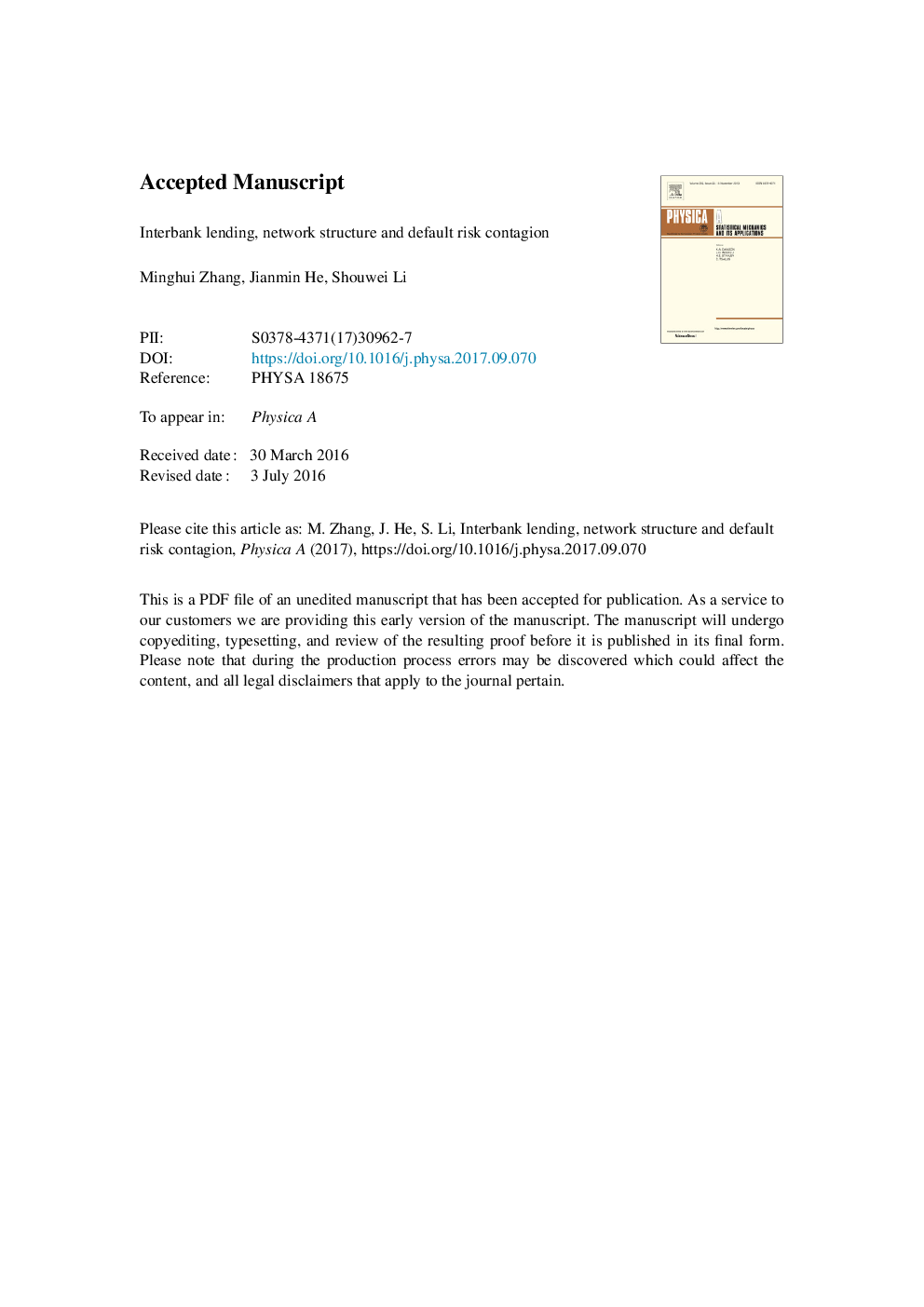| Article ID | Journal | Published Year | Pages | File Type |
|---|---|---|---|---|
| 7376303 | Physica A: Statistical Mechanics and its Applications | 2018 | 16 Pages |
Abstract
This paper studies the default risk contagion in banking systems based on a dynamic network model with two different kinds of lenders' selecting mechanisms, namely, endogenous selecting (ES) and random selecting (RS). From sensitivity analysis, we find that higher risk premium, lower initial proportion of net assets, higher liquid assets threshold, larger size of liquidity shocks, higher proportion of the initial investments and higher Central Bank interest rates all lead to severer default risk contagion. Moreover, the autocorrelation of deposits and lenders' selecting probability have non-monotonic effects on the default risk contagion, and the effects differ under two mechanisms. Generally, the default risk contagion is much severer under RS mechanism than that of ES, because the multi-money-center structure generated by ES mechanism enables borrowers to borrow from more liquid banks with lower interest rates.
Keywords
Related Topics
Physical Sciences and Engineering
Mathematics
Mathematical Physics
Authors
Minghui Zhang, Jianmin He, Shouwei Li,
